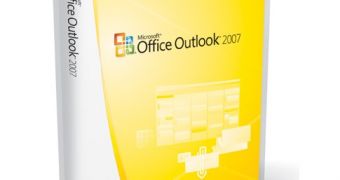Outlook is a default component of the Office System, and the 2007 version of Microsoft's productivity suite makes no exception to this rule. Present at the Office System Developers Conference 2008 in San Jose, California on February 11, 2008, Microsoft Chairman Bill Gates underlined the relevance of the Office System as both a collection of applications, but also as a platform for developers, much in the same way as the Windows operating system. While it is clear that Office will never match Windows' environment of third party products designed to run on top of it, there are illustrative examples pointing to the System's validity from the perspective of developer platforms. Case in point: Xobni. Just in case that you don't want to wait for Office 14, the successor of the Office 2007 System, and Outlook 14, you will be able to upgrade Outlook 2007 ahead of the next version with the Xobni add-on.
"One client example that I thought I'd give is called Xobni, it's actually Inbox backwards, and this is where somebody has come into Outlook and decided to add value. They've taken the task pane so that you look over there on the right, that's their unique display area, and they're helping you understand who you send the most mail to, and how you communicate, and what groups of people you work with. In fact, this is really kind of a social networking set of capabilities but brought into Outlook itself. And so we think it's very, very cool," Gates stated.
For your viewing pleasure, I have embedded two videos at the bottom of this article. The first is a demonstration of Xobni running on top of Outlook 2007. The second is designed to get you an idea of what it would be to work on the Xobni team. The add-on is currently in private beta, accessible by invite only. But as you will be able to see from the video, Xobni manages to enhance Outlook's searching capabilities, improve email relationships visibility and deliver support for threaded email conversations. While such solutions have long been a part of Business Intelligence products, the majority of end users will be able to get their first taste with Xobni.
"They're able to look at mail messages and extract information, they give you statistics about the e-mail patterns, and it lets you manage relationships. It doesn't have the same it actually understands the richness of different types of relationships which, in fact, I think is the next generation of social networking, not just one set of friends who all see the same thing, but rather different relationships, and the way you connect up and share information is different. So this is a great example of having something like Xobni come in and extend things lets us see where do people want new capabilities in the Outlook type environment. So it's using the rich extensibility. It's using the object model to connect up. And so they were able to focus in on what they do, and not have to spend too much time learning about e-mail, and e-mail transport," Gates added.

 14 DAY TRIAL //
14 DAY TRIAL //